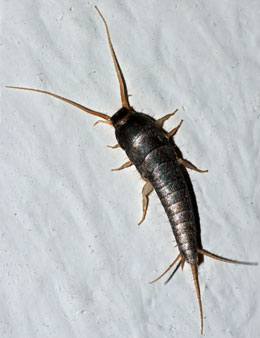Silverfish infestations require professional treatments. This is mainly because silverfish are able to survive in almost any environment and reproduce very quickly, often going unnoticed as they are very sneaky critters. They are nocturnal and move very quickly, making them secretive and difficult to spot as a growing problem. When your home is beginning to show signs of an infestation, you will need to hire a professional due to the fact that over the counter products will only kill individual insects and not the source of the problem.
Professional silverfish extermination from Pest Pro Exterminating will address adult insects as well as their harborage. When your home is hosting a silverfish population, it is highly recommended that you hire a professional to create a customized approach to eliminating the problem.
.
Behavior
Diet
Silverfish will be attracted to and feed on things that contain starches and carbohydrates. This includes book bindings, shampoo, dead insects, silk, cotton, and other textiles.
Where They Hide
Silverfish will inhabit dark and damp areas like bathrooms, closets, attics and basements. It is there that they will feed on paper and linen that is commonly stored in these areas.
Life Cycle
The life cycle of is typically 3-4 months from egg to adult. Certain species of females produce 1-3 eggs per day and can produce them year-round. Other species will lay clusters of 2-20 eggs per day, also year round.
Signs of Infestation:
 At Pest Pro of Long Island, we most commonly hear our clients say they first saw a silverfish in a sink or bathtub. This is because silverfish prefer those humid areas such as a bathroom. While most store bought treatments will kill these individual bugs, effective silverfish extermination will require getting to the source of the problem.
At Pest Pro of Long Island, we most commonly hear our clients say they first saw a silverfish in a sink or bathtub. This is because silverfish prefer those humid areas such as a bathroom. While most store bought treatments will kill these individual bugs, effective silverfish extermination will require getting to the source of the problem.
Some people may also see damaged clothing as a sign of infestation. They are attracted to damp clothing, such as the ones stored in damp places like garages, attics and sheds. Silverfish feed on silk and linen and it is possible to notice their feeding damage.
